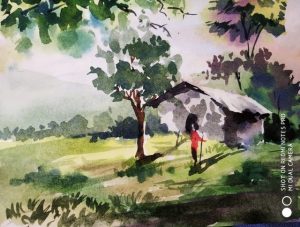Just by reading the first few pages, I was flooded with allusions and connections into the past with mythical characters, biblical references and other interesting allusions. It challenges me to really dive deep into reading every sentence correctly because it is all over the place. I found it hard to focus during the first few pages, but eventually adapted to the sporadic style of the story. There are many interesting references in the story itself and it is fascinating to get to know these references and follow along with the story.
In the beginning, God created the….
The biblical reference Lone Ranger makes while trying to tell his story comes from the very first book from the Bible, Genesis. However, this is not the only biblical reference in the first few pages of the story, Ishmael is also from the bible. Known as Abraham’s first son, Ishmael is cast away by his father because he cannot be the successor for the household for Abraham. Later, he creates his own tribe of his people and wanders around the desert for food and shelter.
Dr. Joseph Hovaugh
Another biblical reference is Dr. Joe Hovaugh, if read quickly, it sounds like Jehovah. Jehovah is a biblical term for God. With Christianity believing in the Trinity, Jehovah is the spiritual part of God. In the story, Dr. Joe Hovaugh also saves four indian men who are in danger. Connection can be made when we see the four men “saved” by Joe Hovaugh. Ultimately, the four men being saved by the doctor makes a connection to Christianity in saying Christians are saved by Jehovah, or God, so that they can go to heaven and rejoice with him forever. This is the biblical reference and the connection I made when reading the story.
Coyote
One of the most obvious references to Native Americans in the story is with Coyote. Coyote is a mythical creature that the Native Americans believe to be “the chief animal of the age before humans.” Direct references to the story with Coyote is made when telling the story is Dr. Joe Hovaugh.
Works Cited

